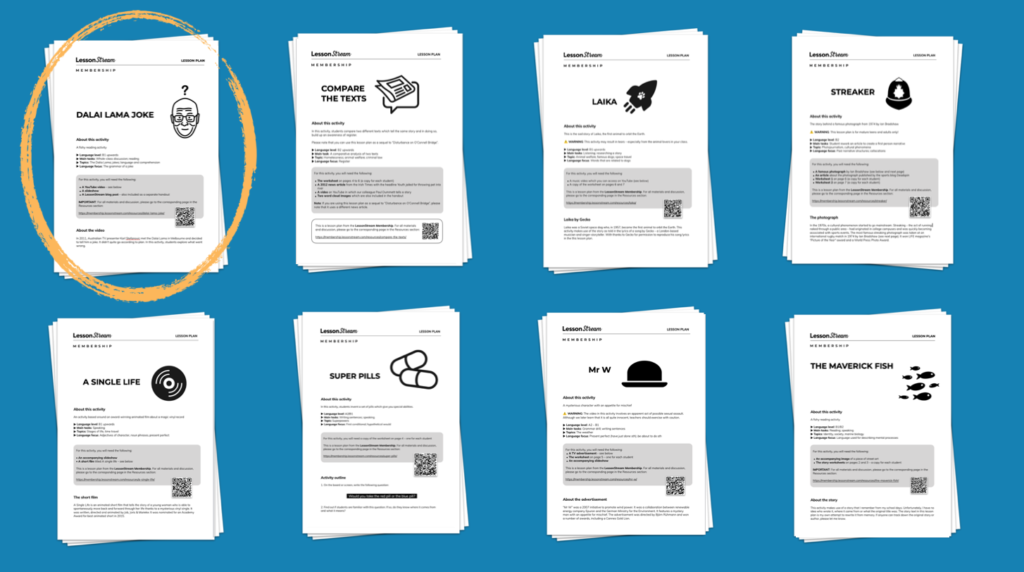In 2011, Australian TV presenter Karl Stefanovic told the Dalai Lama a joke. In this post, we examine what went wrong.
Karl Stefanovic and the Dalai Lama
On the morning of June 9th 2011, the Dalai Lama arrived in Melbourne to start an 11-day tour of Australia. His schedule for that afternoon included a series of media interviews. One of these was with Karl Stefanovic from Channel 9’s TODAY programme.
As a presenter, Karl Stefanovic is popular for his fun-loving personality and irreverent approach. And during the meeting, no one was surprised when he decided to tell the spiritual leader in Tibetan Buddhism a joke about the Dalai Lama himself.
You can see the exchange on YouTube. The video is titled:
“Karl tells the Dalai Lama a joke and it fails miserably.”
Five possible reasons why the Dalai Lama didn’t get the joke
Here is the joke that Karl Stefanovic told the Dalai Lama:
The Dalai Lama walks into a pizza shop and says, “Can you make me one with everything?”
During the exchange, Karl Stefanovic spoke slowly and clearly. He repeated the joke and used gesture to reinforce comprehension. These are great communication techniques for such a context.
But apparently it wasn’t enough. Despite the fact that the Dalai Lama is a competent user of English, he didn’t get the joke.
So what went wrong? What caused this breakdown in communication?
Well, although the joke consists of just 17 words, it’s actually very complex and there are many possible reasons why the Dalai Lama didn’t get it. Let’s explore five of them.
ONE. It involves an idiomatic phrase
If you are “at one with everything” you feel content and connected with nature and the universe. The phrase is associated with Buddhism, meditation, inner peace and spiritual enlightenment.
Although the Dalai Lama is an authority on these subjects, the phrase is idiomatic: its meaning depends on a number of fixed words.
For language learners, it can be difficult to recognise a phrase as being idiomatic. It can also be difficult or impossible to work out the meaning of an idiomatic phrase from its constituent words alone.
(Note that phrasal verbs – find out, give up, look after, etc. – provide another example of idiomatic language.)
TWO. The joke involves a play on words
The humour of the joke relies on a play on words to create a double meaning:
- Meaning one: The Dalai Lama goes into a pizza shop and asks for a pizza with everything on it (i.e. all toppings.)
- Meaning two: The Dalai Lama goes into a pizza shop and asks for spiritual enlightenment.
If English is not your first language, it can be very difficult to recognise this double meaning.
Note also that for each of these meanings, the grammar of the verb “to make” is different.
- Meaning one: “Make me one” = make one for me = make a pizza for me (In this case, “me” is an indirect object.)
- Meaning two: “Make me one” = cause me to be whole (In this case, “me” is a direct object.)
THREE. The joke includes two problematic pronouns
Pronouns allow for grammatical shorthand. Look at this example – a quotation from the Dalai Lama’s The Art of Happiness:
“Happiness is not something ready made. It comes from your own actions.”
In this example, “it” is a pronoun that refers to “happiness” – the subject of the first sentence. Without the pronoun, the quotation would have to read like this:

“Happiness is not something ready made. Happiness comes from your own actions.”
Pronouns allow us to express ideas efficiently. They allow us to refer to people or things without having to state them in their entirety.
But pronouns can also create problems for language learners because sometimes it is difficult to recognise the person or thing that a pronoun represents.
The Dalai Lama joke includes two potentially problematic pronouns:
The Dalai Lama walks into a pizza shop and says, “Can you make me one with everything?”
In order to appreciate the first meaning of the joke (see part two above), an English learner would have to realise that:
- One = a pizza
- Everything = all the toppings (tomato, mozzarella, pepperoni, sweetcorn, onion, tuna, green peppers, pineapple, etc.)
FOUR. Meaning is created through intertextuality
Look at the first 8 words of the joke:
The Dalai Lama walks into a pizza shop ...
Does this format look familiar to you? If so, that’s because there are many jokes in English that begin in a similar way. Rather than a pizza shop, however, it is usually a bar. In fact, these are sometimes called “bar jokes”.
Here are three examples with explanations to follow:
• A duck walks into a bar, orders a drink, and tells the bartender to put it on his bill.
• The past, present and future walk into a bar. It was tense.
• A square and a circle walk into a bar. The square says, “Your round”.
- As well as being the amount of money that you owe, a bill is a bird’s beak.
- In grammar, a tense is a way to mark verbs to show when an action happened in time. Tense is also an adjective that refers to a potentially dangerous situation.
- If “it’s your round”, it’s your turn to buy the drinks. But the phrase sounds the same as “you’re round.”
Like all living creatures – past and present – texts do not exist in isolation. They are connected to other texts through genre, register, format, composition, reference, parody, etc.
We refer to this as intertextuality – the idea that a text’s meaning is derived, in part, from its relationships with other texts.
Bad joke alert ⚠️
A text walks into a Tibetan library and says, “I've come to find my intertextuality.”
From a practical point of view, familiarity with English jokes allows us to recognise other English jokes. And once we have identified a joke like this, we are primed to look for a double meaning.
It is easy to take this knowledge for granted. But without it, the Dalai Lama might have failed to realise that Karl was telling him a joke in the first place.
FIVE. The joke requires knowledge of pizza culture
If you watched the video until the end, you will have seen Karl and the other presenters reflecting on what went wrong. Karl’s conclusion was the the Dalai Lama didn’t know what pizza was.
The Dalai Lama has visited over 50 countries. He has been to Italy 12 times and the Vatican City 11 times. Surely the Dalai Lama has walked into a pizza restaurant with the Pope.
I would guess that the Dalai Lama knows what pizza is. But that doesn’t mean that he is familiar with the culture of pizza and the practice of choosing toppings.
And finally …
The Dalai Lama seemed to take the joke in good spirits. But too often, learners of English will blame themselves when comprehension fails. And in this case at least, the fault clearly lies with the native speaker.
As a journalist and as a professional communicator, you might expect Karl Stefanovic to be a bit more linguistically aware. But too often, we see native speakers of English fail when required to use English in international contexts. You might want to check out this “shambolic” example from 2016.
Over the last few years, I have seen a number of courses which claim to teach English as a lingua franca (= a language that people use to communicate when they have different first languages). In most cases, these are aimed at speakers of English as a second language. Surely this is the wrong target audience. Isn’t it the native speakers of English who need some training?
“Dalai Lama joke” is the 98th lesson plan in the LessonStream library. It includes a PDF version of this blog post, adapted for B1 learners of English.
- Language level: B1 upwards
- Main task: Discussion; reading
- Topics: The Dalai Lama; jokes; language & comprehension
- Language focus: The grammar of a joke; miscomprehension in English
Get instant access to all of the lesson plans when you join the LessonStream Membership.





